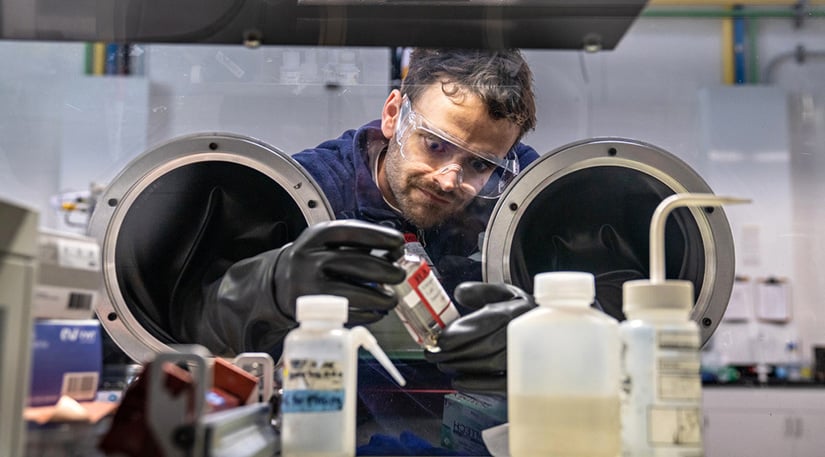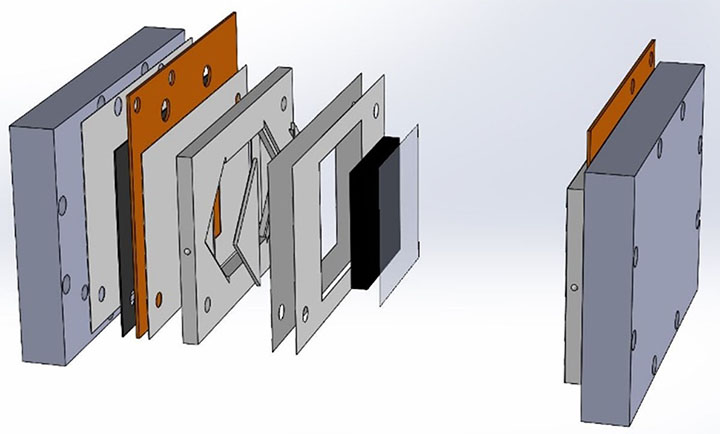Electrochemical Energy Storage
NREL is researching advanced electrochemical energy storage systems, including redox flow batteries and solid-state batteries.

The clean energy transition is demanding more from electrochemical energy storage systems than ever before. The growing popularity of electric vehicles requires greater energy and power requirements—including extreme-fast charge capabilities—from the batteries that drive them. In addition, stationary battery energy storage systems are critical to ensuring that power from renewable energy sources is available when and where it is needed.
Although lithium-ion batteries are already widely used in transportation energy storage, consumer electronics, and stationary storage, NREL researchers continue to evaluate and synthesize novel battery materials and next-generation battery technologies
Learn more about the energy storage facilities at NREL.
Redox Flow Batteries

NREL's custom designed open field flow redox flow battery offers optimized electrolyte dispersion and all-inert construction.
New developments in redox flow batteries may offer long-duration, long lifetime stationary energy storage needed to maximize grid resiliency.
NREL researchers are engineering new redox flow battery designs that may enable market deployment of this emerging technology. One design, a scalable flow loop system, is compatible with both aqueous and organic chemistries, which allows researchers to explore compatibility with novel materials to maximize high-power performance.
NREL's rapid prototyping of battery cells and stacks for different chemistries, including a novel organic redox electrolyte developed by our industry partner, to optimize the system and drive down research costs. Additional research seeks to identify low-cost and earth-abundant metal alternatives to the vanadium typically found thin redox flow batteries.
Solid-State Batteries
Solid-electrolyte batteries have the potential to significantly improve the energy density/range of electric vehicle batteries. To support this next-generation technology area, NREL researchers are leading materials discovery and characterization efforts to evaluate the impacts of interface, chemical, electrochemical, and mechanical factors on solid-state battery systems. The interface stability of solid-state battery cells is critical to enable low-cost deployment in electric vehicles and grid applications.
To streamline the future deployment of solid-state batteries, NREL researchers are evaluating high-throughput techniques to optimize cell fabrication, such as roll-to-roll manufacturing. The current high-pressure, high-temperature batch processing used to create solid-state batteries is not suitable for large-scale manufacturing. As part of this research, NREL demonstrated the ability to fabricate functioning pouch and coin cells with thin separator layers and composite solid-state battery cathodes and anodes.
Contact
Share
Last Updated April 3, 2025
